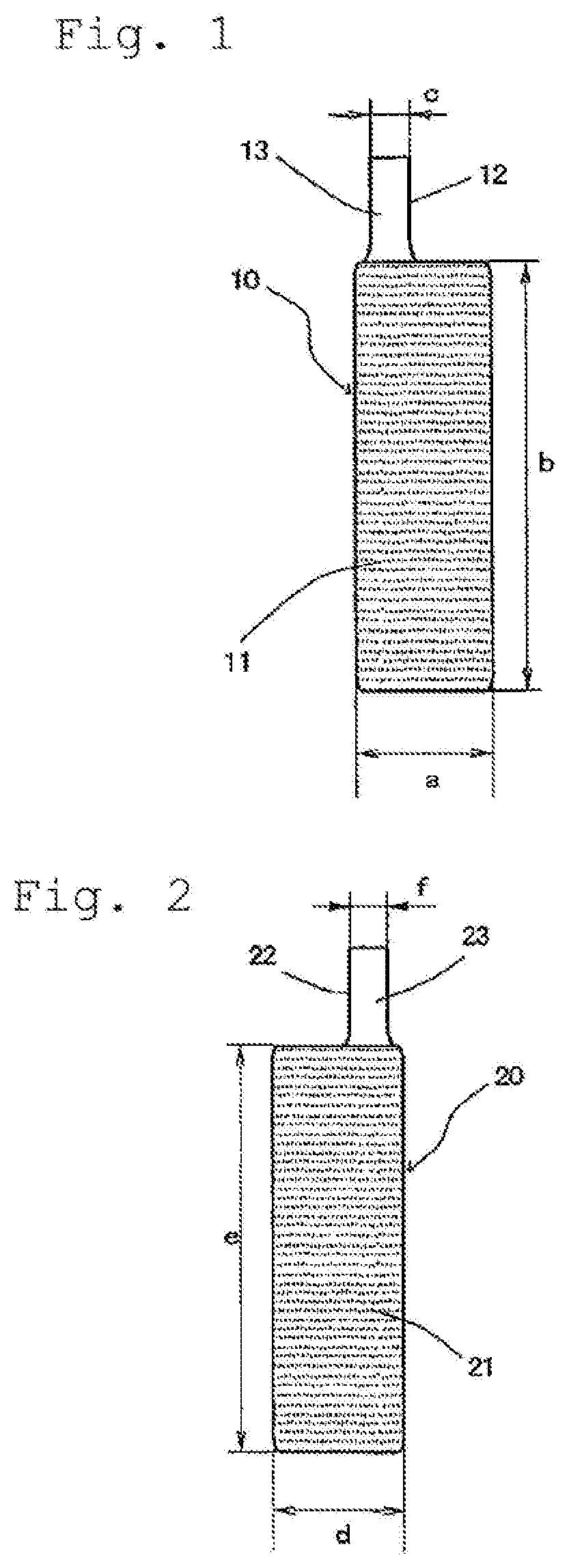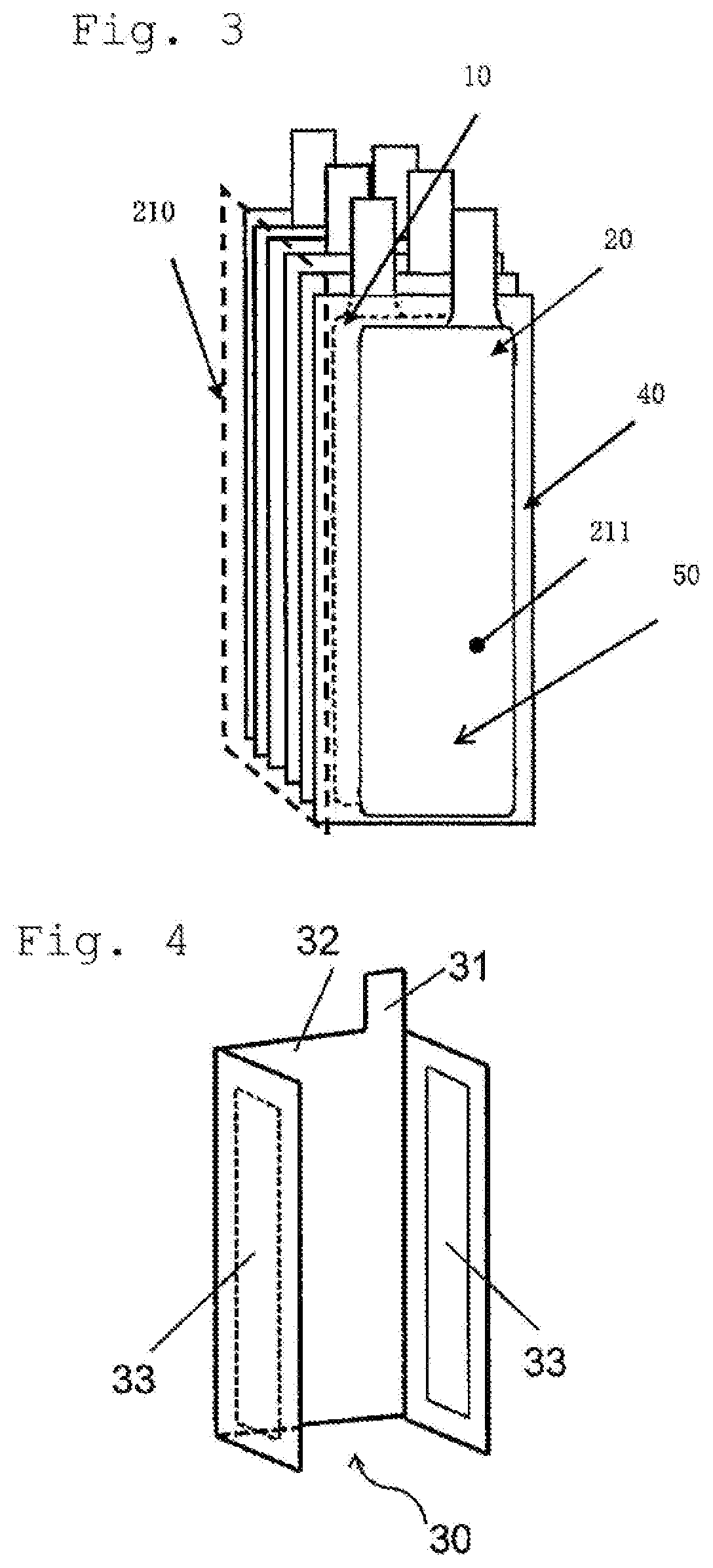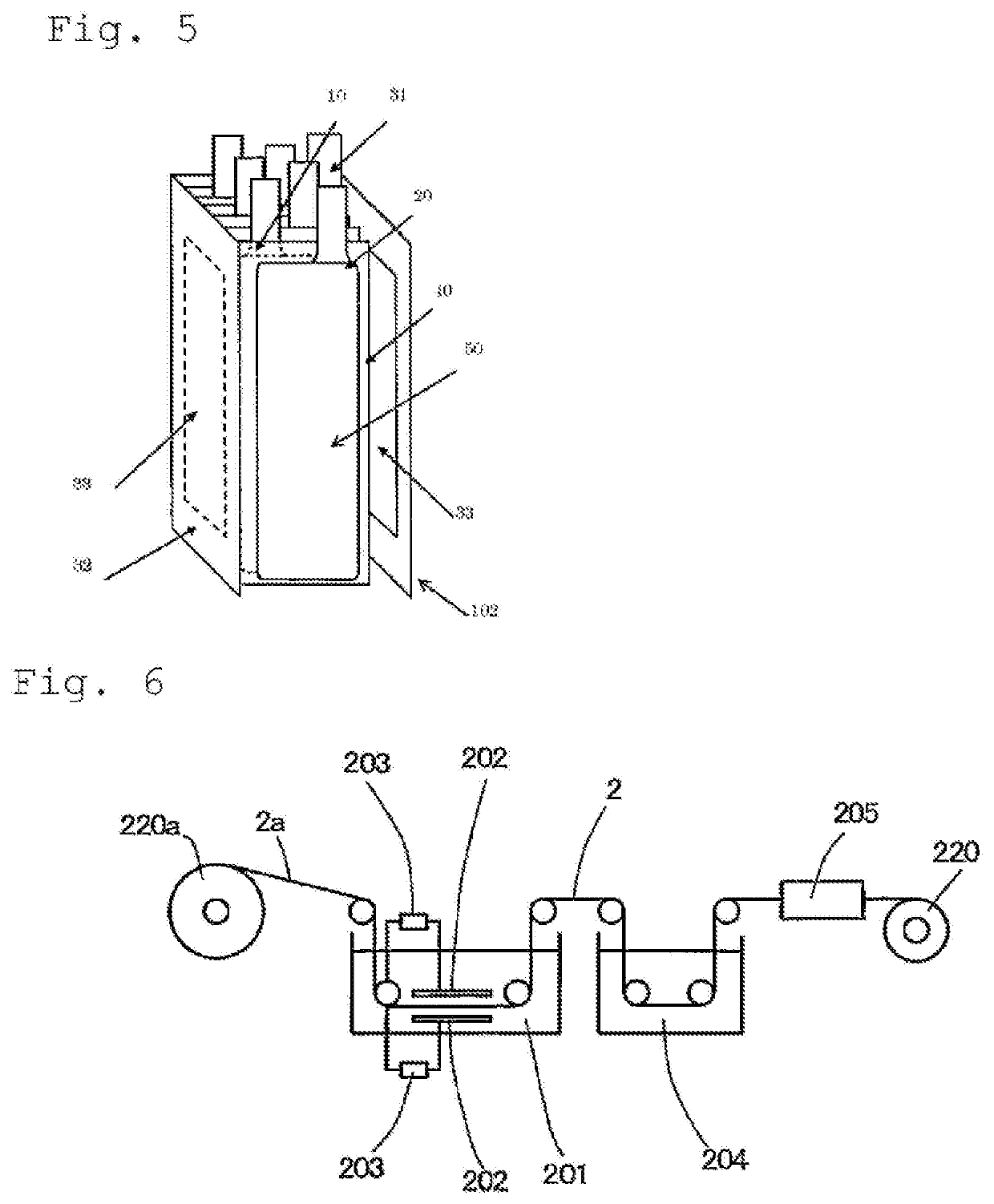A lithium ion secondary battery and a method for producing the same
a lithium ion secondary battery and lithium ion technology, applied in the field of lithium ion secondary batteries, can solve the problems of remarkably swollen batteries, and achieve the effect of superior storage properties and cycle characteristics
- Summary
- Abstract
- Description
- Claims
- Application Information
AI Technical Summary
Benefits of technology
Problems solved by technology
Method used
Image
Examples
example 1
[0157]Li2CO3 as a Li-containing compound, Co3O4 as a Co-containing compound, Mg(OH)2 as a Mg-containing compound, ZrO2 as a Zr-containing compound, and Al(OH)3 as an Al-containing compound were put into a mortar at an appropriate mixture ratio, and mixed and hardened into a pellet form. Using a muffle furnace, it was burned at 950° C. in the atmosphere (in the atmospheric pressure) for 24 hours. Thereby obtained was a lithium cobalt oxide (Al) whose composition formula was found to be LiCo0.9795Mg0.011Zr0.0005Al0.009O2 by means of the ICP (Inductive Coupled Plasma) method.
[0158]Then, into 200 g of a lithium hydroxide aqueous solution at a pH of 10 and at a temperature of 70° C., 10 g of the lithium cobalt oxide (Al) was put. After stirring for dispersion, 0.0154 g of Al(NO3)3.9H2O and an ammonium solution to suppress a pH fluctuation were dropped over a period of 5 hours, to produce an Al(OH)3 coprecipitation matter, so as to adhere it to the surface of the lithium cobalt oxide (Al)...
example 2
[0175]A lithium ion secondary battery was prepared in the same manner as Example 1 except for the followings: A complex Si-2 in which the surfaces of SiO were coated with a carbon material (an average particle size of 5 μm, a specific surface area of 7.9 m2 / g, in which the quantity of the carbon materials in the complex was 8 mass %) was used as a negative electrode active material. The mixture solvent to be used as a nonaqueous electrolyte liquid was of propylene carbonate and diethyl carbonate at a volume ratio of 30:70.
example 3
[0176]30 mass % of graphite A (which is composed of mother particles of natural graphite whose surfaces were coated with an amorphous carbon originated from pitch as a carbon source, and has an average particle size of 10 μm.) and 70 mass % of the complex Si-1 were mixed with a V-type blender for 12 hours to obtain a negative electrode active material. Then, except for using the negative electrode active material above and a Li foil 33 having a mass of 14 mg per one sheet, the same procedure as Example 1 was carried out to prepare a lithium ion secondary battery.
PUM
| Property | Measurement | Unit |
|---|---|---|
| voltage | aaaaa | aaaaa |
| thickness | aaaaa | aaaaa |
| voltage | aaaaa | aaaaa |
Abstract
Description
Claims
Application Information
 Login to View More
Login to View More - R&D
- Intellectual Property
- Life Sciences
- Materials
- Tech Scout
- Unparalleled Data Quality
- Higher Quality Content
- 60% Fewer Hallucinations
Browse by: Latest US Patents, China's latest patents, Technical Efficacy Thesaurus, Application Domain, Technology Topic, Popular Technical Reports.
© 2025 PatSnap. All rights reserved.Legal|Privacy policy|Modern Slavery Act Transparency Statement|Sitemap|About US| Contact US: help@patsnap.com



